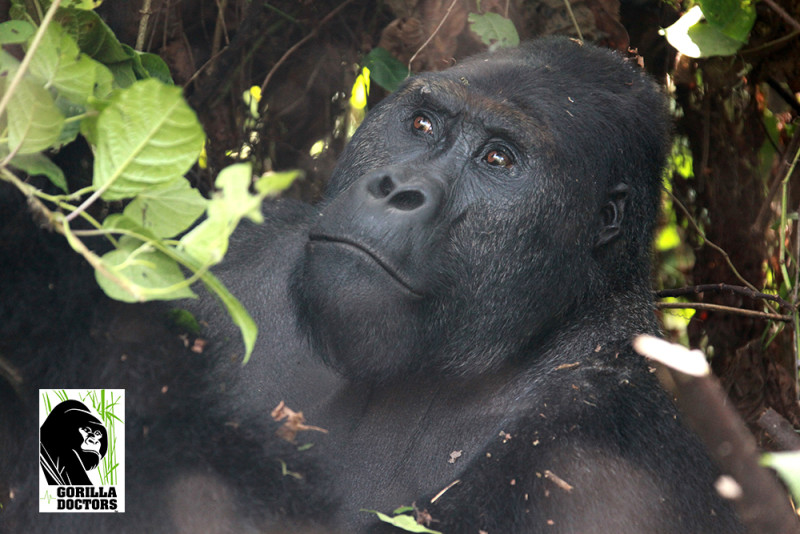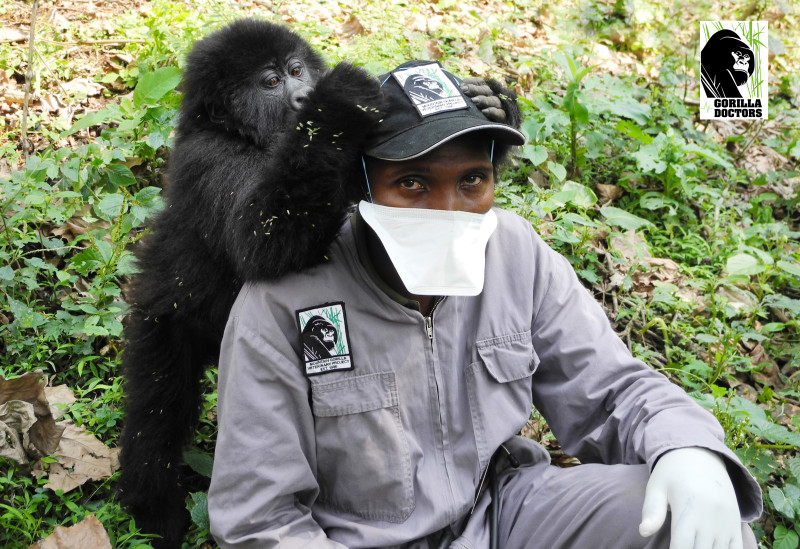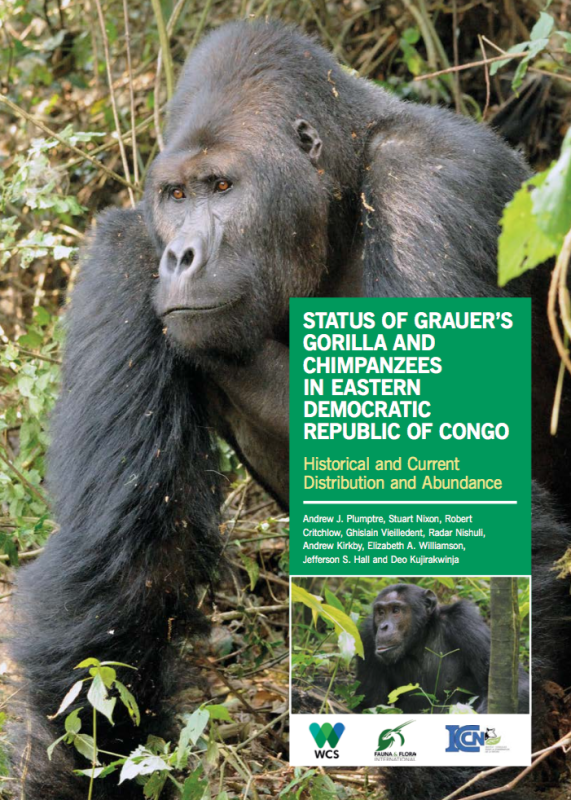Drastic Decline of Grauer’s Gorillas in Eastern Democratic Republic of Congo
By Gorilla Doctors Staff on Friday, April 8th, 2016 in Blog.

Wildlife conservationists around the world are ringing alarms this week, as the Congolese wildlife authority (ICCN), Wildlife Conservation Society and Fauna & Flora International just released a groundbreaking report on the status of wild Grauer’s gorillas (Gorilla beringei graueri) in eastern Democratic Republic of Congo (DRC).
It is estimated that there has been a 77-93% decline in Grauer’s gorilla populations over the last 20 years; there are now an estimated 3,800 individuals left in the world.
Causes for the devastating decline are many: losses of forest habitat, bushmeat hunting, illegal wildlife trade, and mining have all contributed. As well, the Grauer’s gorilla’s whole range has been embroiled in civil war and unrest over the last 20 years, driving desperate people and communities to move into the gorillas’ forest homes.
Grauer’s gorillas are now believed to be surviving in just four populations, including one centered in Kahuzi-Biega National Park, where a portion of the population is habituated to the presence of people to facilitate tourism, and where Gorilla Doctors provides life-saving veterinary care to endangered Grauer’s gorillas.
“Gorilla Doctors likes to say that we’re saving a species, one gorilla at a time,” says Dr. Mike Cranfield, co-Director of Gorilla Doctors with Dr. Kirsten Gilardi. “With this devastating news that Grauer’s gorillas have become even more critically endangered, our work in eastern DRC has taken on a whole new level of urgency.”
Our Congolese team – Dr. Eddy and Dr. Martin – routinely travel to Kahuzi-Biega to visually check the health of every habituated Grauer’s gorilla in the park. When and if a gorilla is gravely ill or injured, a Gorilla Doctors team performs a clinical intervention to remove snares, treat wounds, and administer antibiotics. Since 2006, Gorilla Doctors has provided life-saving veterinary care to many Grauer’s gorillas in the wild.
As well, Gorilla Doctors has helped the ICCN with emergency care for a majority of the 15 infant Grauer’s gorillas that have been confiscated from poachers to date, and continues to provide veterinary oversight for orphaned Grauer’s gorillas living at the GRACE sanctuary in Tayna.
“When Gorilla Doctors is asked to help with a new orphaned gorilla, I feel a mix of worry about its future, “ Dr. Eddy shares. “But I am also feeling happy about the contribution Gorilla Doctors is making to save its life and stabilize its health.”

Dr. Eddy with a Grauer’s gorilla orphan.
As an active member of the implementation team for the Grauer’s Gorilla Conservation Action Plan, led by the Jane Goodall Institute with funding from the Arcus Foundation and others, Gorilla Doctors is not just treating ill and injured gorillas; we are also training Kahuzi-Biega park personnel to recognize clinical signs in gorillas, and providing them and their family members with preventive health care, so that the people who have the closest contact with habituated Grauer’s gorillas pose less risk of potentially transferring an infectious disease to the gorillas.
Recent publication of IUCN Best Practice Guidelines for Health Monitoring and Disease Control in Great Ape Populations, which Gorilla Doctors helped write, will help protected area authorities around the world better protect great ape populations like eastern DRC’s Grauer’s gorillas.
The report can be found on Wildlife Conservation Society website and more information on Gorilla Doctors work to support Grauer’s gorillas in the wild can be found on gorilladoctors.org.



 Donate
Donate